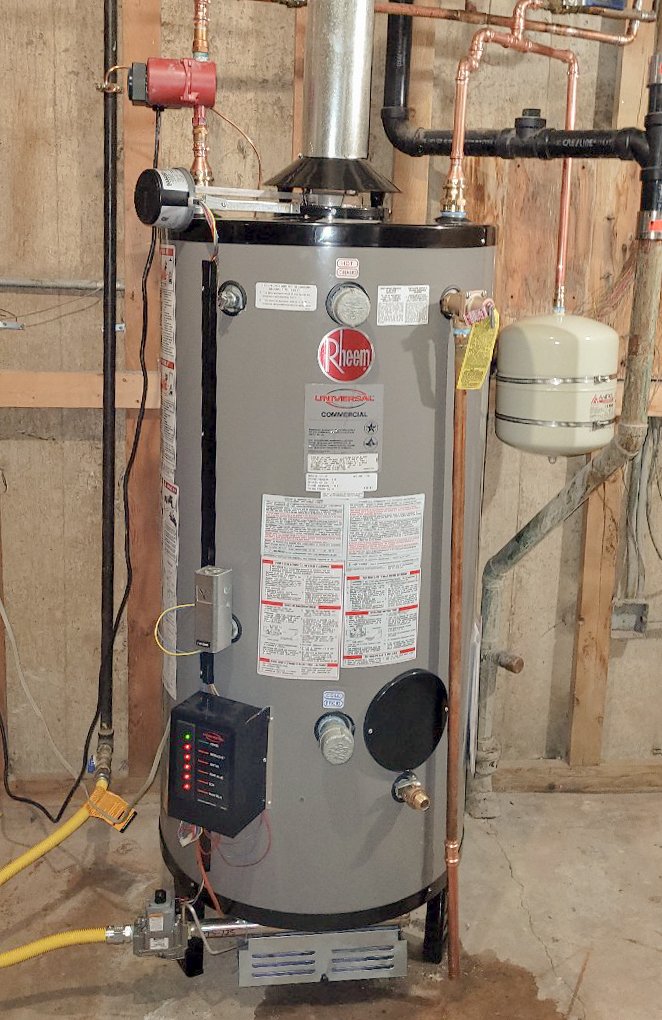Water Heater Maintenance: How to Extend Its Lifespan
Your water heater is a crucial part of your home, providing hot water for daily activities like showering, cleaning, and cooking. To ensure it runs efficiently and lasts as long as possible, regular water heater maintenance is necessary. Neglecting maintenance can lead to sediment buildup, corrosion, and even system failure. Below is a comprehensive guide on how to properly maintain your water heater and extend its lifespan.
Flushing the Tank to Remove Sediment
Over time, sediment and mineral deposits accumulate at the bottom of the water heater tank, reducing heating efficiency and potentially causing damage. To flush the tank:
Turn off the power supply. For gas heaters, set the thermostat to "pilot." For electric heaters, turn off the power at the breaker.
Shut off the cold water supply to prevent more water from entering the tank.
Connect a garden hose to the drain valve at the bottom of the heater and run it to a floor drain or outside.
Open the drain valve and allow the water to fully drain. If the water appears dirty, briefly turn on the cold water supply to help flush out remaining sediment.
Close the drain valve, remove the hose, and turn the water supply back on before restoring power.
Performing this maintenance annually can significantly improve your heater’s performance and longevity.
Checking and Replacing the Anode Rod
The anode rod is a metal rod inside the tank that attracts corrosive elements, preventing them from rusting the tank. Over time, the rod deteriorates and needs replacement. To check it:
Turn off the power and water supply.
Locate the anode rod—usually found on top of the water heater, screwed into the tank.
Use a socket wrench to loosen and remove the rod.
Inspect the rod for heavy corrosion. If more than 50% is corroded, replace it with a new one (typically made of aluminum or magnesium).
Insert the new rod, tighten it securely, and restore the water and power supply.
Checking the anode rod every 2-3 years can prevent tank corrosion and extend the heater’s lifespan.
Adjusting the Temperature for Efficiency
Setting your water heater to the right temperature can improve efficiency and safety. The recommended setting is 120°F to prevent overheating and scalding while saving energy. To adjust the temperature:
For gas water heaters: Locate the temperature dial on the gas valve and adjust it accordingly.
For electric water heaters: Remove the thermostat access panel, use a screwdriver to adjust the dial, then replace the panel.
Lowering the temperature slightly reduces wear on heating elements and prevents excessive energy consumption.
Insulating the Tank and Pipes
Heat loss from the tank and pipes can reduce efficiency and increase heating costs. To insulate your water heater:
Wrap the tank in a specially designed water heater insulation blanket, ensuring you don’t cover safety components like the thermostat. Follow manufacturing instructions on how to properly install the blanket on your water heater.
Insulate exposed hot water pipes using foam pipe insulation to minimize heat loss.
This simple step improves efficiency and reduces strain on the heater, especially in colder climates.
Testing the Pressure Relief Valve
The pressure relief valve is a crucial safety feature that prevents excessive pressure buildup in the tank. To test it:
Locate the valve (typically on the side or top of the tank).
Place a bucket under the discharge pipe to catch water.
Lift the lever on the valve slightly and release it.
Check for proper function—a small amount of water should flow out. If no water comes out or it keeps leaking afterward, the valve needs replacement.
Testing this valve annually ensures your heater remains safe from pressure-related damage.
Inspecting for Leaks and Corrosion
Regularly check for leaks, rust, or corrosion around the tank and pipes. Signs of trouble include:
Puddles or moisture near the base
Rust-colored water coming from faucets
Unusual noises like popping or rumbling
If you notice any of these issues, contact a professional plumber to assess the damage and recommend repairs.
Scheduling Professional Maintenance
While many maintenance tasks can be done yourself, a professional inspection every couple of years can catch potential problems early. A plumber can:
Perform a thorough sediment flush
Check gas connections for leaks
Inspect the heating elements for wear
Ensure the entire system is operating efficiently
Final Thoughts
By following these water heater maintenance steps, you can maximize efficiency, reduce energy costs, and extend the lifespan of your unit. Preventative care not only saves money on repairs but also ensures your home always has a reliable supply of hot water. Make these maintenance tasks part of your routine, and your water heater will serve you well for years to come.

